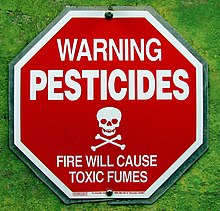Used properly, pyritherin is quite safe and biodegradable. It also breaks down very fast into a benign substance.
Anyone with a peanut allergy can be killed by peanuts.
And only people who are allergically susceptible to pyritherin should avoid it.
Doc, I know the wiki link says it can still be harmful to humans, but we do know that anyone can edit wiki, and there is nothing that really explains how or why yes?. Yes, we know that folks who are allergic to it can see harm from it.
Many times folks who are a bit overzealous in trying to protect the environment will warn us about just about any substance...especially if it has a chemical sounding name.
I just wanted to add...water is quite toxic and deadly by way of ingestion. Fact.
You really do have it all wrong here and if you worked with pesticides or had any formal training you would KNOW this shit. Until you do I suggest you stop telling ppl that pesticides are all good and keep on using them LOL.. You go right ahead but don't being telling others that it's safe as it's NOT!!!!!!!!! peace out Headband707

HUGE misconception here that i it comes from nature it's safe .. WELL it isn't ....


 Headband707
Headband707


